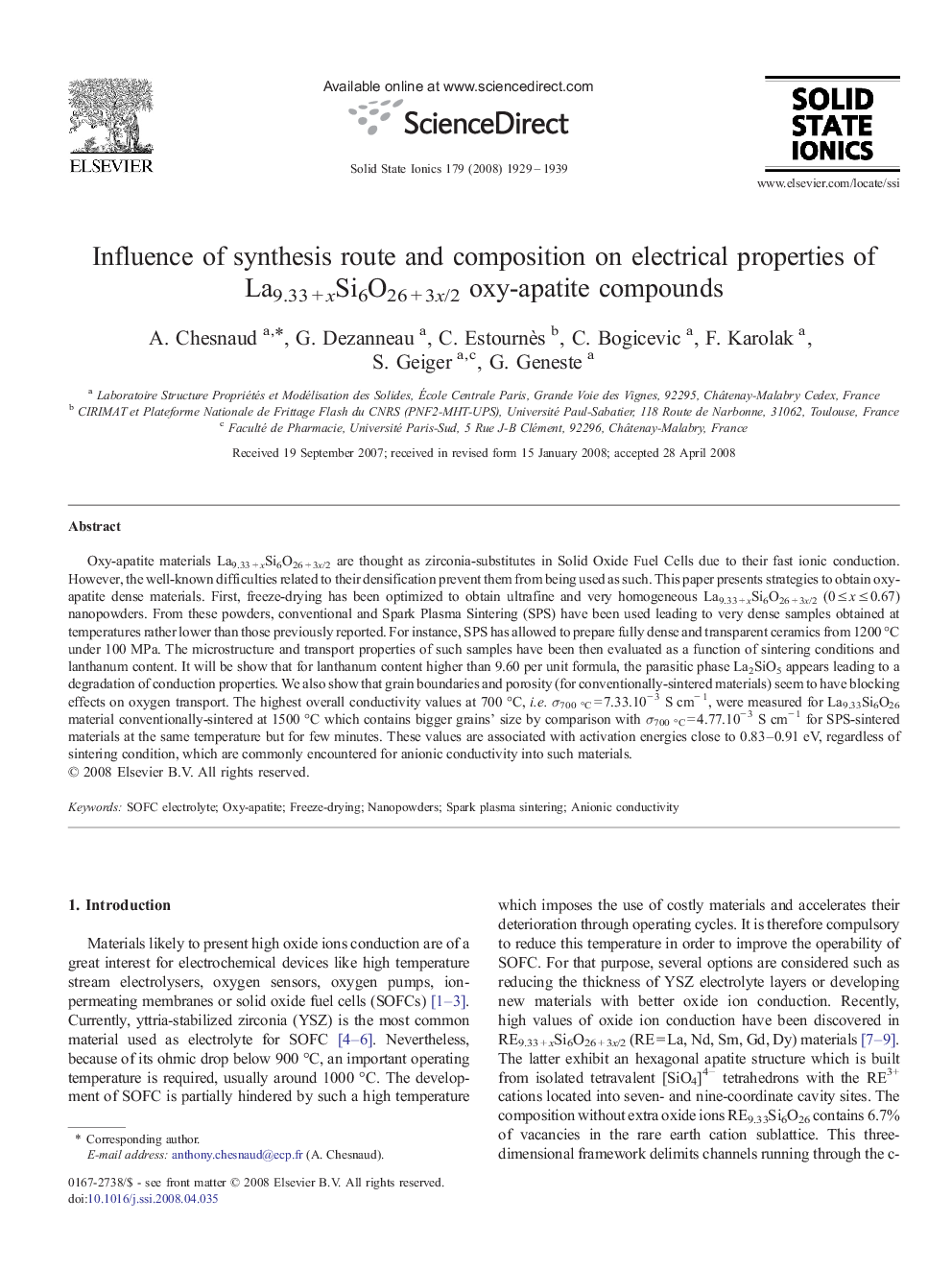| Article ID | Journal | Published Year | Pages | File Type |
|---|---|---|---|---|
| 1298011 | Solid State Ionics | 2008 | 11 Pages |
Oxy-apatite materials La9.33 + xSi6O26 + 3x/2 are thought as zirconia-substitutes in Solid Oxide Fuel Cells due to their fast ionic conduction. However, the well-known difficulties related to their densification prevent them from being used as such. This paper presents strategies to obtain oxy-apatite dense materials. First, freeze-drying has been optimized to obtain ultrafine and very homogeneous La9.33 + xSi6O26 + 3x/2 (0 ≤ x ≤ 0.67) nanopowders. From these powders, conventional and Spark Plasma Sintering (SPS) have been used leading to very dense samples obtained at temperatures rather lower than those previously reported. For instance, SPS has allowed to prepare fully dense and transparent ceramics from 1200 °C under 100 MPa. The microstructure and transport properties of such samples have been then evaluated as a function of sintering conditions and lanthanum content. It will be show that for lanthanum content higher than 9.60 per unit formula, the parasitic phase La2SiO5 appears leading to a degradation of conduction properties. We also show that grain boundaries and porosity (for conventionally-sintered materials) seem to have blocking effects on oxygen transport. The highest overall conductivity values at 700 °C, i.e. σ700 °C = 7.33.10− 3 S cm− 1, were measured for La9.33Si6O26 material conventionally-sintered at 1500 °C which contains bigger grains' size by comparison with σ700 °C = 4.77.10− 3 S cm− 1 for SPS-sintered materials at the same temperature but for few minutes. These values are associated with activation energies close to 0.83–0.91 eV, regardless of sintering condition, which are commonly encountered for anionic conductivity into such materials.
